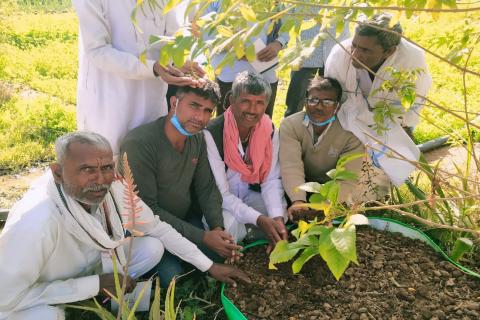Highly Hazardous Pesticides in Dausa, Rajasthan

India is one of the most dynamic generic pesticide manufacturers globally and is the fourth largest pesticide manufacturer after China, United States of America, and Japan. The production of pesticides started in India in 1952 with the establishment of a plant for Benzene hexachloride (BHC) production near Calcutta. India is now the second-largest manufacturer of pesticides in Asia after China and ranks twelfth globally. According to a Pesticide Action Network (PAN) report, from 2014-15 to 2017-18, pesticide use grew by 13.07 percent across the country. In 2017-18, 69,282 tons of pesticides (chemical and biopesticides combined) were used in India. It was a sharp increase from the 61,273 tons used in 2014-15 and 16 percent higher than the amount of pesticides used in 2015-16. In 2018-2019, around 60,201 tons of pesticides were used, according to provisional data, but the actual amount used could be much larger (as the data from PAN does not show pesticide use from four northeast states and union territories).
With its diverse agroclimatic conditions, Rajasthan is richly endowed with the cultivation of a variety of crops and a strong animal husbandry sector. Agriculture in Rajasthan continues to be the backbone of the state’s economy, with agriculture and allied sectors contributing 25.56% of the state’s total GDP in 2019–20. The total geographical area of Rajasthan is 34.2 million hectares, and the forested area is 2.651 million hectares. The cultivable area is 25.633 million hectares (74.9% of total geographical area), and the net sown area is 17.096 million hectares (66.7% of the cultivable area). The gross cropped area is 21.664 million hectares, and the area sown more than once is 5.11 million hectares with a cropping intensity of 124.5%. The net irrigated area is 5.239 million hectares (By canals - 25.08%, by tube wells - 72.7%, and by other means – 2.22%). The gross irrigated area is 8.09 million hectares, and the percentage of the net irrigated sown area is 30.6%. The total sum of the landholdings is 5.819 million hectares out of which 1.849 million (31.78%) hectares belong to marginal farmers, 1.2 million (20.79%) hectares to small farmers, and 2.76 million (47.43%) to farmers who hold land larger than 2 hectares.
Objectives of this study were:
- To understand the overall situation concerning highly hazardous pesticides in the Dausa district of Rajasthan, India.
- To collect facts about highly hazardous pesticides in the region – their use, trade, available alternatives, etc.
- To create awareness among the stakeholders and end-users about the health and environmental impacts of HHPs.
- Raise the awareness about HHPs through providing information materials.
- Develop and circulate Information Education Communication (IEC) materials.
- Conduct an awareness-raising program and campaign on HHPs.
This project relates to Sustainable Development Goals 2, 3, 6, 8, 12, 13, 14 and 15
Special thanks to IPEN's South Asia Regional Coordinator Tripti Arora and Regional Hub Toxics Link for their important contributions to the development and finalization of the project.
| Attachment | Size |
|---|---|
| 7.45 MB |
